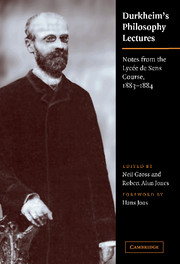Book contents
- Frontmatter
- Contents
- Foreword
- Translators' Note
- Acknowledgments
- Introduction
- Part I Preliminary Matters
- Part II Psychology
- 5 The Object and Method of Psychology
- 6 Faculties of the Soul
- 7 On Pleasure and Pain
- 8 The Inclinations
- 9 The Emotions and Passions
- 10 Theory of Knowledge
- 11 External Perception and Its Conditions. The Senses
- 12 External Perception. The Origin of the Idea of Externality
- 13 External Perception. On the Objectivity of the Idea of Externality. (1) Does the External World Exist?
- 14 External Perception. On the Objectivity of the Idea of Externality. (2) On the Nature of the External World
- 15 Consciousness. On the Conditions of Consciousness
- 16 Consciousness. On the Origin of the Idea of the Self
- 17 Consciousness. On the Nature of the Self
- 18 Reason. The Definition of Reason
- 19 Reason. The Material of Reason. (1) Principles of Reason
- 20 Reason. The Material of Reason (2) Rational or First Ideas
- 21 Reason. Empiricism
- 22 Reason. Evolutionism. The Theory of Heredity
- 23 Reason. On the Objectivity of Rational Principles
- 24 Faculties of Conception. On the Association of Ideas
- 25 Faculties of Conception. Memory
- 26 Faculties of Conception. Imagination
- 27 Faculties of Conception. Sleep. Dreams. Madness
- 28 Complex Operations of the Mind. Attention. Comparison. Abstraction
- 29 Complex Operations of the Mind. Generalization. Judgment. Reasoning
- 30 The Object and Method of Aesthetics
- 31 What Is Beauty?
- 32 Prettiness and the Sublime. Art
- 33 On Activity in General. Instinct
- 34 Habit
- 35 On the Will and on Freedom
- 36 On Freedom (Continued). Psychological Determinism
- 37 On Freedom (Conclusion). Scientific Determinism. Theological Fatalism
- Part III Logic
- Part IV Ethics
- Part V Metaphysics
- Appendix: Biographical Glossary
- Index
20 - Reason. The Material of Reason (2) Rational or First Ideas
Published online by Cambridge University Press: 21 October 2009
- Frontmatter
- Contents
- Foreword
- Translators' Note
- Acknowledgments
- Introduction
- Part I Preliminary Matters
- Part II Psychology
- 5 The Object and Method of Psychology
- 6 Faculties of the Soul
- 7 On Pleasure and Pain
- 8 The Inclinations
- 9 The Emotions and Passions
- 10 Theory of Knowledge
- 11 External Perception and Its Conditions. The Senses
- 12 External Perception. The Origin of the Idea of Externality
- 13 External Perception. On the Objectivity of the Idea of Externality. (1) Does the External World Exist?
- 14 External Perception. On the Objectivity of the Idea of Externality. (2) On the Nature of the External World
- 15 Consciousness. On the Conditions of Consciousness
- 16 Consciousness. On the Origin of the Idea of the Self
- 17 Consciousness. On the Nature of the Self
- 18 Reason. The Definition of Reason
- 19 Reason. The Material of Reason. (1) Principles of Reason
- 20 Reason. The Material of Reason (2) Rational or First Ideas
- 21 Reason. Empiricism
- 22 Reason. Evolutionism. The Theory of Heredity
- 23 Reason. On the Objectivity of Rational Principles
- 24 Faculties of Conception. On the Association of Ideas
- 25 Faculties of Conception. Memory
- 26 Faculties of Conception. Imagination
- 27 Faculties of Conception. Sleep. Dreams. Madness
- 28 Complex Operations of the Mind. Attention. Comparison. Abstraction
- 29 Complex Operations of the Mind. Generalization. Judgment. Reasoning
- 30 The Object and Method of Aesthetics
- 31 What Is Beauty?
- 32 Prettiness and the Sublime. Art
- 33 On Activity in General. Instinct
- 34 Habit
- 35 On the Will and on Freedom
- 36 On Freedom (Continued). Psychological Determinism
- 37 On Freedom (Conclusion). Scientific Determinism. Theological Fatalism
- Part III Logic
- Part IV Ethics
- Part V Metaphysics
- Appendix: Biographical Glossary
- Index
Summary
To this point in the course, we've described reason as the faculty that, from the onset of and without any help from experience, is able to combine two given ideas. Now it's time to ask where we get these ideas. All ideas have the same subject – a phenomenon. This was demonstrated by the earlier definitions, but it might have been anticipated a priori by the following reasoning. Necessary propositions state the conditions to which experience is subject. This means that every necessary proposition has to contain two terms – the part of experience with which the proposition is concerned and its conditions. Hence, all rational judgments have the following form: “Phenomena of such and such a kind are subject to such and such a condition.”
Of the two ideas that make up a rational judgment, therefore, one has an origin that we already know – experience. But whence comes the other? Its origin must be outside of experience, for otherwise it couldn't be related to experience. So these are a priori ideas (also called rational or first ideas). More specifically, they're the ideas of time, space, substance, cause, and end. Explaining their presence in the mind, Kant conceived of them as “determined forms,” as molds whose forms are taken on by phenomena as they are perceived. The mind simply takes note of this process and, when it has done so a certain number of times, concludes that: “All external phenomena are subsumed under the concept of space.”
- Type
- Chapter
- Information
- Durkheim's Philosophy LecturesNotes from the Lycée de Sens Course, 1883–1884, pp. 101 - 105Publisher: Cambridge University PressPrint publication year: 2004



